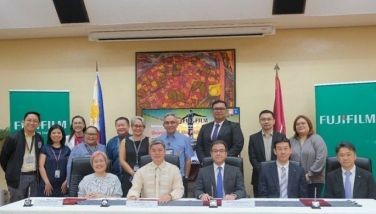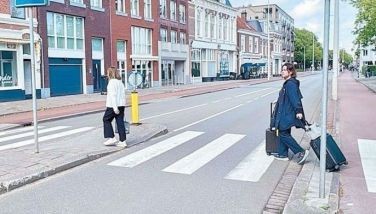Sinug sa Casa
CEBU, Philippines - My third year of witnessing the annual “Sinug sa Casa Gorordo†brought back memories of one Monday in 2005, after the Fiesta Señor, when I asked a candle vendor at the Basilica del Sto. Niño to dance the “sinug†for me in honor of my dearly departed grandparents, an aunt, an uncle, and a younger sister.
The tindera gave me a puzzling look and huffed: Day, kaning sinug para nis mga buhi, dili sa mga patay (Miss, sinug is for the living, not for the dead!)
Having felt the embarrassment crawling up my spine, I replied: Aw! Abi nakog pwede kay Lunes baya ron (Oh! I thought it was okay since it’s a Monday). Mondays are considered to be the day of souls by Roman Catholics.
How I wish I could locate that tindera again today, bring her to Casa Gorordo every year, so she can relearn how the past has honored the dead with a traditional dance-prayer offered to the Sto. Niño called the “sinug.†It is for sinners and saints alike, definitely for the dead and the living!
Casa Gorordo Museum holds Sinug
The Ramon Aboitiz Foundation, Inc. Casa Gorordo Museum held its house tradition Sinug sa Casa Gorordo last January 21, this despite the accident suffered by Estelita “Nang Titang†Diola – keeper of the Sinug beat and dance – earlier this year that had prevented her from performing.
Dr. Jocelyn Gerra, executive director of RAFI Culture and Heritage Unit, said that RAFI was deeply saddened when they were informed by Nang Titang’s family about her accident, especially with her advanced age (87). She is dedicated to her yearly obligation to Casa Gorordo as she has always been since she was about seven years old.
“We, however, made sure that she is present during the performance,†Gerra said. Nang Titang, now on a wheelchair after suffering from a hip injury, listened to the beating of the drums and mouthed the alabasyon (prayer in the form of a poem) even with eyes closed, head on a pillow.
The Sinug is a traditional dance-prayer offered to the Sto. Niño de Cebu. Its beat and choreography are different from the popular Sinulog street dance seen during the feast of the Holy Child in Cebu every third Sunday of January.
It was the tradition of the Gorordo family to have Sinug dance troupes perform on Mondays after the Fiesta Señor as a prayer for the souls of their departed loved ones.
When RAFI acquired Casa Gorordo and turned it into a museum, it pledged to uphold the traditions of the Gorordo household including the Sinug. The prayers in the Sinug has been expanded to include not only souls of departed Gorordos but all souls in purgatory; well-being of NGOs and cultural workers; the success of cultural programs such as Gabii sa Kabilin; and the personal intentions of guests.
According to Florencio Moreño II, curator of the Casa Gorordo Museum, it was due to Nang Titang’s efforts to teach younger people in her family and at her barangay, that knowledge of the Sinug dance steps and beat has been preserved.
“There is a hopeful turn to this sad turn of events; Nang Titang’s grandnephew, Rommel Diola, was taught well by her grand-aunt so we are assured of a performance this year and for many years to come,†Moreño said.
Gerra said that RAFI’s partnership with Nang Titang and her dance troupe is part of the foundation’s advocacies in culture and heritage to preserve traditions that are bases for Filipino cultural identity. “RAFI is proud to support Nang Titang’s and her dance troupe’s efforts to keep the Sinug tradition alive,†she said.
As to why the group has never been a guest performer at the Sinulog Grand Parade, or even of the activities at the City Sports Center, Carol Diola, relative of Nang Titang, said they were never invited. “Pero okay lang kay dili man sad na ilaha sa Simbahan,†she quipped. She learned from Nang Titang that before the advent of the Sinulog festival, groups from various barangays like Lahug, Busay, and Guadalupe converge in the Basilica to perform the sinug ritual.
“Besides, we don’t hold the image of the Holy Child in our hands. Sinug is a prayer ritual in the form of a dance performed at the altar or before the image of the Sto. Niño,†she stressed in Cebuano.
“Masuko man tong amahan ni Nang Titang (Buenaventura “Turang†Diola) if gunitan ang imahen kay morag mawala bitaw ang pagtahod. Duna gyud na siyay altar, patente ang pag-sinug (Holding the image with bare hands angers Nang Titang’s father because such dishonors the Sto. Niño. It should have to be revered on an altar, that’s how it’s properly done).†(FREEMAN)
- Latest






























